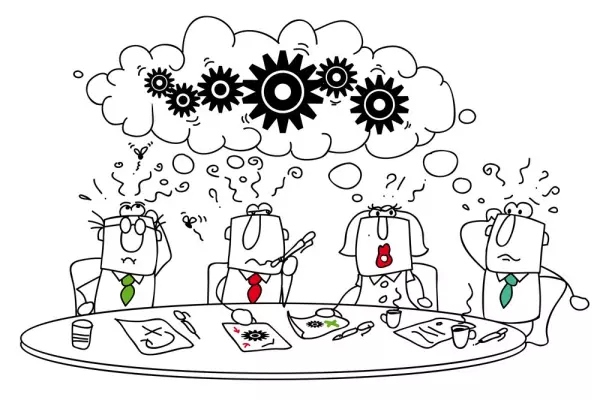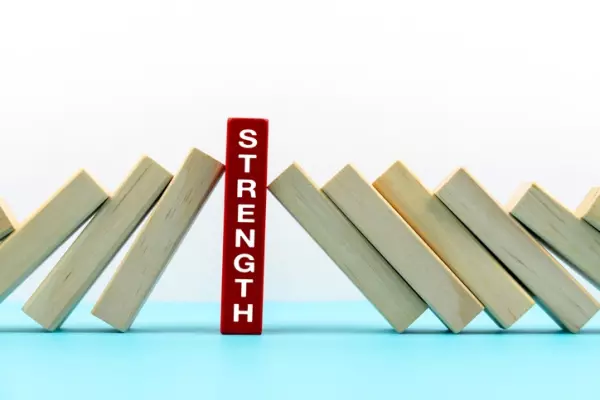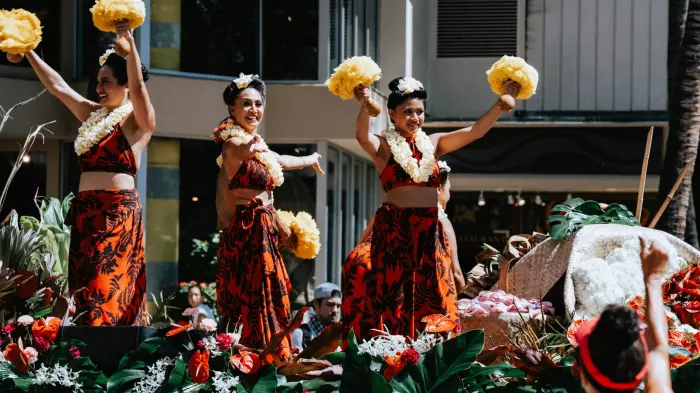“When do you feel most company-ish?” It’s an unusual question but an effective way of highlighting those moments in the workplace that are often overlooked in conversations around culture and performance.
Though hard to define, these moments or “rituals” are crucial to the concept of connectedness – one of the first things to suffer in the hybrid workplace.
Getting the rituals right is a small but crucial first step in building a high-performing team.
While you won’t see them mentioned on a corporate website, rituals probably say more about life at work than anything else.
Defining a ritual
So, what does that term refer to? Well, we’re not talking about trust-falls and chanting along with the CEO à la WeWork (though, at a stretch, these things probably meet the ritual definition).
Put simply, a ritual is any act that is assigned meaning, is carried out at regular intervals, and goes beyond just its practical purpose.
Think, the daily Herald crossword you do as a team in the lunchroom, or the birthday month morning-tea shout; we do these things not simply to complete the task, but to create a sense of belonging, of cohesion.
Rituals like these promote psychological safety by encouraging connectedness in a team or organisation; they humanise the workforce.

Office customs can go a long way towards enhancing your workers' efforts. (Image: Depositphotos)
With numerous studies suggesting connectedness is the number-one challenge leaders face in the move to hybrid models of work, intentionally designing workplace rituals is also an essential part of building high-performing teams.
Research shows that when we feel connected to others or even ourselves in our work and personal lives, the feel-good hormone oxytocin goes up and stress hormone cortisol goes down.
When we feel a sense of belonging and trust with a team, engagement, collaboration and productivity rise – we’re more efficient, with increased focus, more agile, better aligned to goals and more resilient to change.
How do we use rituals?
Tennis star Rafael Nadal famously performs an elaborate repertoire of rituals before and during every match.
When he arrives at the stadium, he enters the court holding a racket in his hand, taking great care never to step on the lines and always crossing each line right-foot first.
During the coin toss, he faces the net and starts jumping until the coin falls, then runs to the baseline, where he drags his foot across the entire line in a single sweeping motion before hitting each shoe with his racket.
This behaviour may sound like superstition but it’s pure science. According to Nadal, he does this as a way of placing himself in a match: ordering his surroundings to match the order he seeks in his head.

Rafael Nadal says his pre-match rituals are designed to order his surroundings to match the order he seeks in his head. (Image: Depositphotos)
Whether this sense of control is illusory is of little importance. What matters is that ritual can be an efficient coping mechanism, and that is why those areas of life that involve high stakes and uncertain outcomes are rife with rituals.
A workplace can be thought of in the same way. Rituals provide predictability, helping to impose order to the chaos of everyday life, providing teams with a sense of control over uncontrollable situations; situations we’ve come particularly accustomed to over the past few years.
Simple acts
Repetition of simple acts can shape how people behave and think. For example, one of your rituals might include beginning meetings with a check-in question, from something as simple as “what has your attention today?” to something as obscure as “what is the best bird?”
This serves many purposes: it primes the team to talk, supports individuals to connect as humans, promotes equal air time, gets everyone present, and helps things start on time. It also aligns with values seen as essential in the modern workplace: inclusivity and participation.
Supporting teams to find purpose in an organisation is critical to engagement and innovation. Tying key values to rituals is the perfect way to incorporate purpose into employees’ shared experiences and mindfully apply company values into everything they do.

The onboarding process is an ideal time to explain your organisation's values to recruits.
(Image: Depositphotos)
Rituals aren’t limited to “get-togethers”; they can also be incorporated in systems and processes.
For example, the onboarding process is a great time to connect people with the values and heart of the organisation, by introducing a potential new hire to the team they’re likely to join, prior to being offered the role.
During the virtual meet-and-greet, current employees share something about themselves, learn a little about the candidate and share quirky anecdotes about the company. Rituals like this can create a sense of connection from day one, for the recruit and the existing team.
How can you build rituals at your firm?
- Observe first: Notice what teams are already doing – are there tensions you might be able to solve or strengths to build on? Look at how meetings get started, for example; consider them from the perspective of an outsider to find norms and expand them into rituals.
- Aim for the beginning, or the end: There are numerous moments to design in workplace rituals: during recruiting and onboarding, meetings, meals, professional development, periods of change (drastic or otherwise) and celebratory milestones. Beginnings and endings, however, are particularly ripe for ritual design – these are moments when people might be experiencing more ambiguity, and rituals in these spaces can be an impactful and anchoring force.
- Consider when you feel most aligned with your company: An excellent tactic from US-based workplace strategist Erica Keswin, the godmother of rituals, is to ask, “When do you feel most [company]-ish?”. When you start with this question, you direct attention and reflection on areas of the employee experience that are memorable and therefore provide a perfect opportunity for design or redesign. This focus on the experience of the team helps to keep ritual design employee-driven. Look for ways to encourage employees to create their own team rituals. What do they seem to enjoy doing together? Build on and resource that.
- Ask for feedback on your ritual/s and refine: Don’t be afraid to try things out. Treat everything as an experiment. If you start a ritual and it’s not sticky, get feedback, see what’s working, what’s not, and continue to iterate. Rituals are so innate to our human experience that they do often emerge organically. You can’t force a ritual: if it doesn’t work, let it go.
Could rituals benefit your business?
Designing rituals is just one way leaders can unlock and support new ways of working in their organisations. But they’re low-hanging fruit. Often you’ll find that a small change, made deliberately and intentionally, is the beginning of a wider and more meaningful business transformation.














